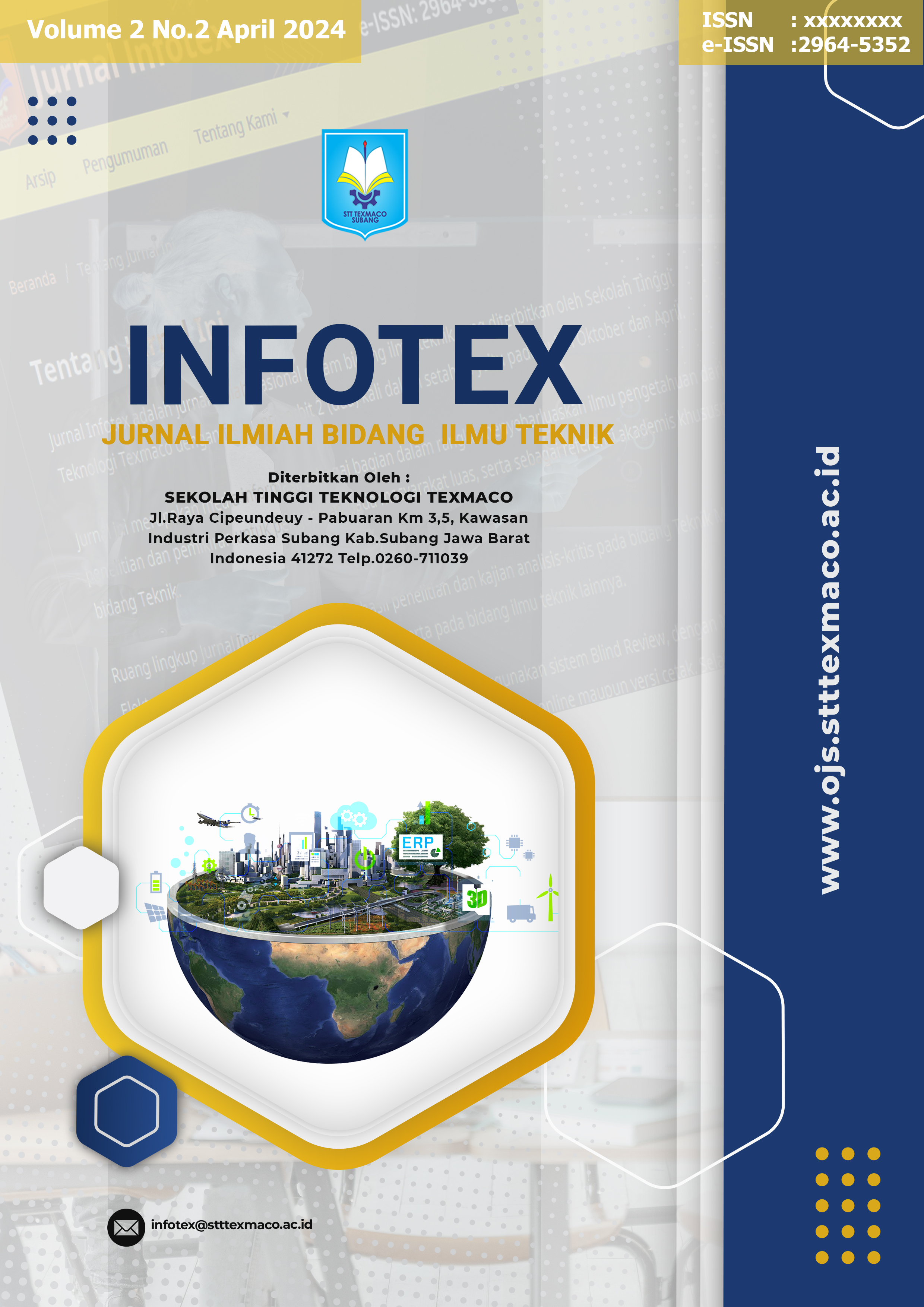Analisis Pengendalian Kualitas Produk Wiring Harness Pada Line 4 Menggunakan Metode PDCA Di TF STT Texmaco
Keywords:
quality, defects, PDCAAbstract
PT Piranti Indonesia is a manufacturing company that produces wiring harness. Based on observations, it is known that defective products or defects are often found in the housing process during October - December 2022. Therefore, this study aims to find out the causes of defects in the housing process, find out efforts to minimize the occurrence of defects in the housing process to improve quality, and make improvements to reduce defects in the housing process at least 10%. The quality control method used in this study uses the Plan-Do-Control-Action (PDCA) cycle assisted by tools such as histograms, Pareto charts, p control charts, cause-and-effect diagrams, and Failure Mode Effect Analysis (FMEA) which are implemented in Teaching Factory STT Texmaco Subang. The results of this study indicate that the most defective products are caused by terminals push out due to the human factor or the operator does not understand the applicable Standard Operating Procedure (SOP). After carrying out improvements by conducting refresh training, it was found that the defects that occurred during January - March 2023 were only 15% from the previous 29% in the period October - December 2022. This shows that the use of the PDCA cycle can minimize defects resulting in a decrease in defects caused by the Terminal Push Out by 14%.
References
P. Kotler dan K. L. Keller, Marketing Management. dalam Always learning. Pearson,
[Daring]. Tersedia pada: https://books.google.co.id/books?id=UbfwtwEACAAJ
H. Kartika, “Penerapan Lean Kaizen untuk Meningkatkan Produktivitas Line Painting
pada Bagian Produksi Automotive dengan Metode PDCA,” Jurnal Sistem Teknik Industri,
vol. 22, no. 1, hlm. 22–32, 2020.
S. Utami dan A. H. Djamal, “IMPLEMENTASI PENGENDALIAN KUALITAS PRODUK XX
KAPLET PADA PROSES PENGEMASAN PRIMER DENGAN PENERAPAN KONSEP PDCA,”
JISI: JURNAL INTEGRASI SISTEM INDUSTRI, vol. 5, no. 2, 2018, doi:
24853/jisi.5.2.33-42.
A. Fatah dan A. Z. Al-Faritsy, “Peningkatan dan Pengendalian Kualitas Produk dengan
Menggunakan Metode PDCA (Studi Kasus pada PT. X),” Jurnal Rekayasa Industri (JRI),
vol. 3, no. 1, hlm. 21–30, Apr 2021, doi: 10.37631/jri.v3i1.288.
R. Alfatiyah, “ANALISIS KEGAGALAN PRODUK CACAT DENGAN KOMBINASI SIKLUS
PLAN-DO-CHECK-ACTION (PDCA) DAN METODE FAILURE MODE AND EFFECT
ANALYSIS (FMEA),” TEKNOLOGI, vol. 2, no. 1, hlm. 2620–5726, Mar 2019.
A. Handoko, “IMPLEMENTASI PENGENDALIAN KUALITAS DENGAN MENGGUNAKAN
PENDEKATAN PDCA DAN SEVEN TOOLS PADA PT. ROSANDEX PUTRA PERKASA DI
SURABAYA,” Jurnal Ilmiah Mahasiswa Universitas Surabaya, vol. 6, no. 2, hlm. 1329–
, 2017.
W. B. Setiawan, “ANALISIS PENGENDALIAN KUALITAS PRODUK BAN VULKANISIR
DENGAN METODE STATISTICAL QUALITY CONTROL (SQC) DI CV. JAYA BAN ARS
MALANG,” hlm. 6–11.
M. M. Ulkhaq, S. N. W. Pramono, dan R. Halim, “APLIKASI SEVEN TOOLS UNTUK
MENGURANGI CACAT PRODUK PADA MESIN COMMUNITE DI PT. MASSCOM GRAPHY,
SEMARANG,” Jurnal PASTI, vol. 3, hlm. 220–230.
M. Prasetyawati, “PENGENDALIAN KUALITAS DALAM UPAYA MENURUNKAN CACAT
APPEARANCE DENGAN METODE PDCA DI PT. ASTRA DAIHATSU MOTOR,” Seminar
Nasional Sains dan Teknologi, hlm. 1–6, 2014.
M. S. H. Elmas, “PENGENDALIAN KUALITAS DENGAN MENGGUNAKAN METODE
STATISTICAL QUALITY CONTROL (SQC) UNTUK MEMINIMUMKAN PRODUK GAGAL
PADA TOKO ROTI BAROKAH BAKERY,” Jurnal Penelitian Ilmu Ekonomi WIGA, vol. 7,
hlm. 15–22, 2017.
S. Andiyanto, A. Sutrisno, dan Charles Punuhsingon, “PENERAPAN METODE FMEA
(FAILURE MODE AND EFFECT ANALYSIS) UNTUK KUANTIFIKASI DAN PENCEGAHAN
RESIKO AKIBAT TERJADINYA LEAN WASTE,” Jurnal Online Poros Teknik Mesin, vol. 6,
no. 1.
Downloads
Published
How to Cite
Issue
Section
License
Copyright (c) 2024 Rifqi Jalu Pramudita, Sugengriadi, Mila Sari

This work is licensed under a Creative Commons Attribution-ShareAlike 4.0 International License.






